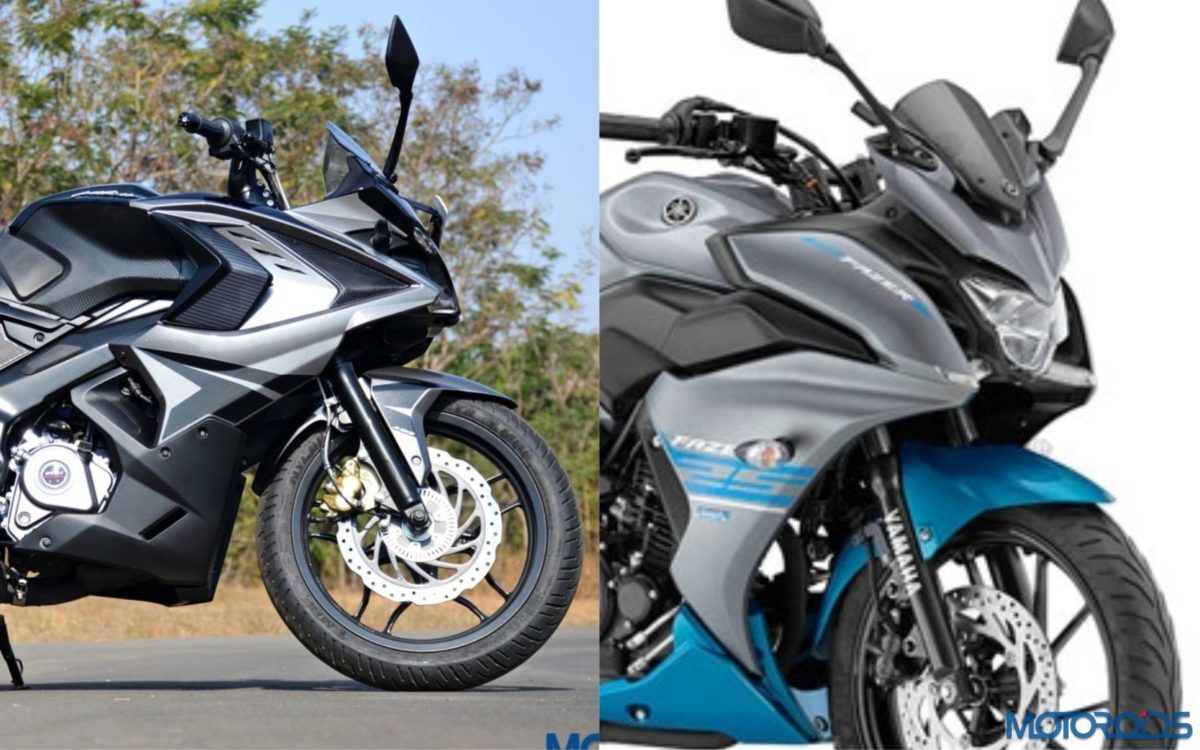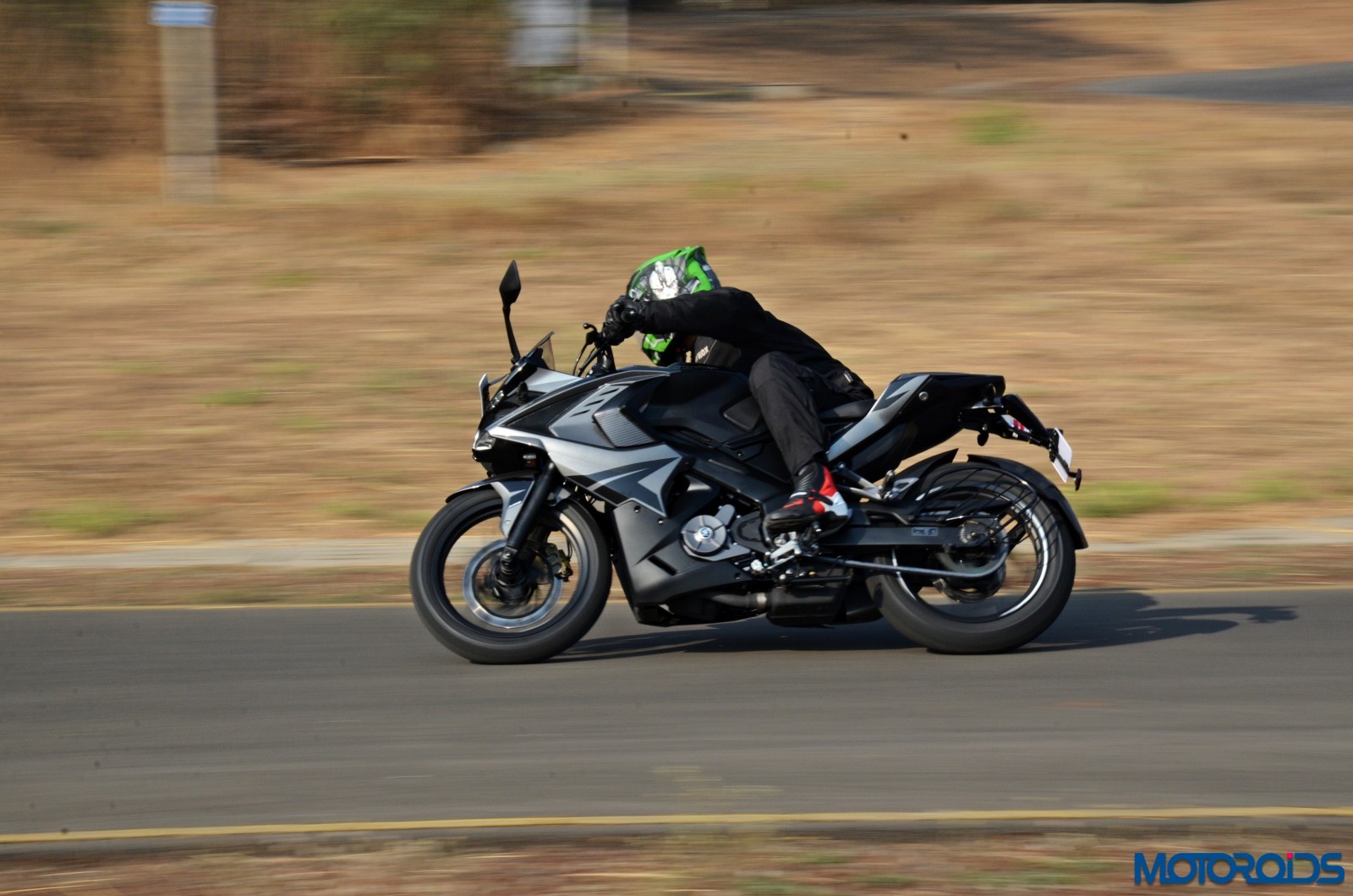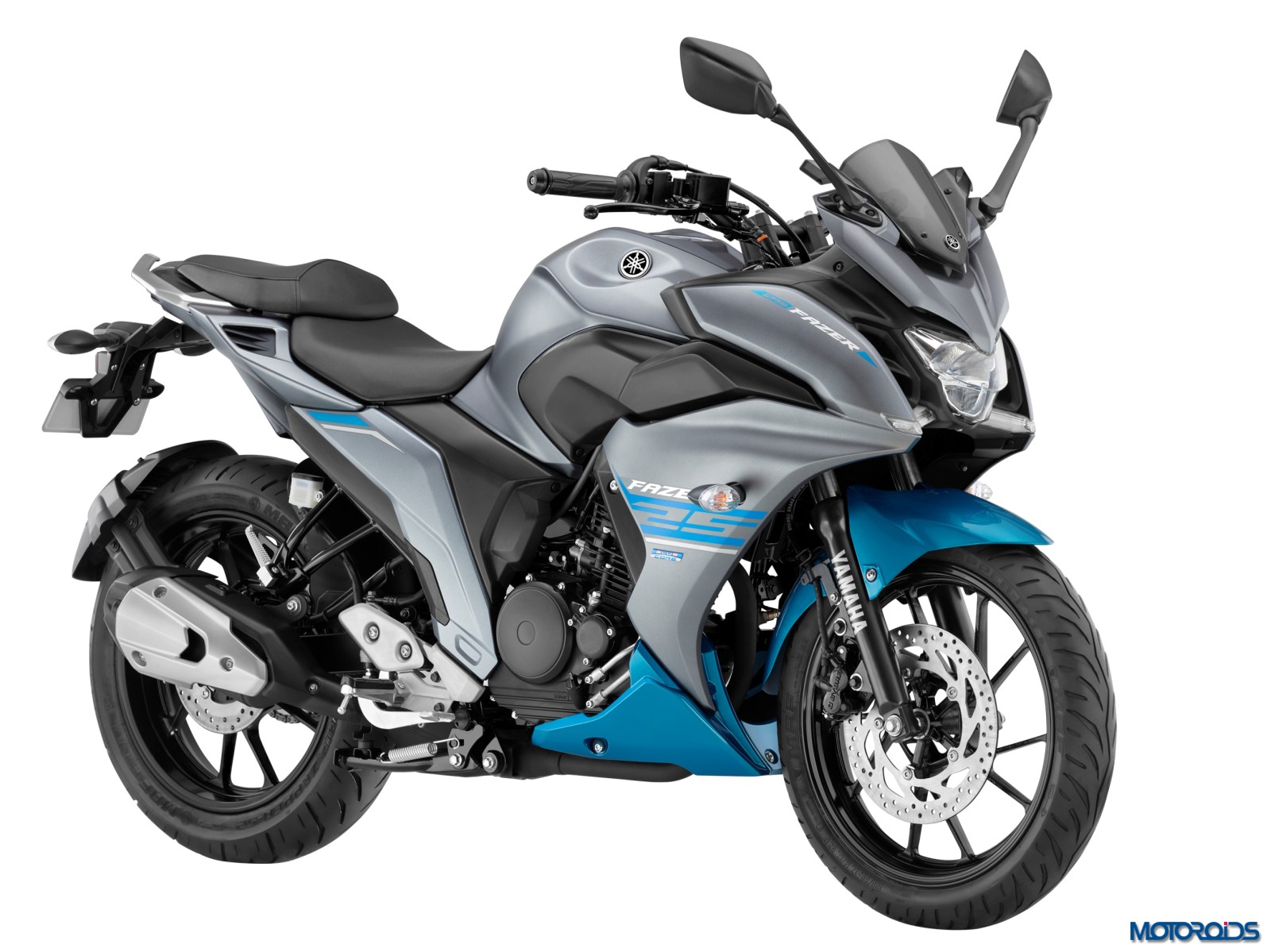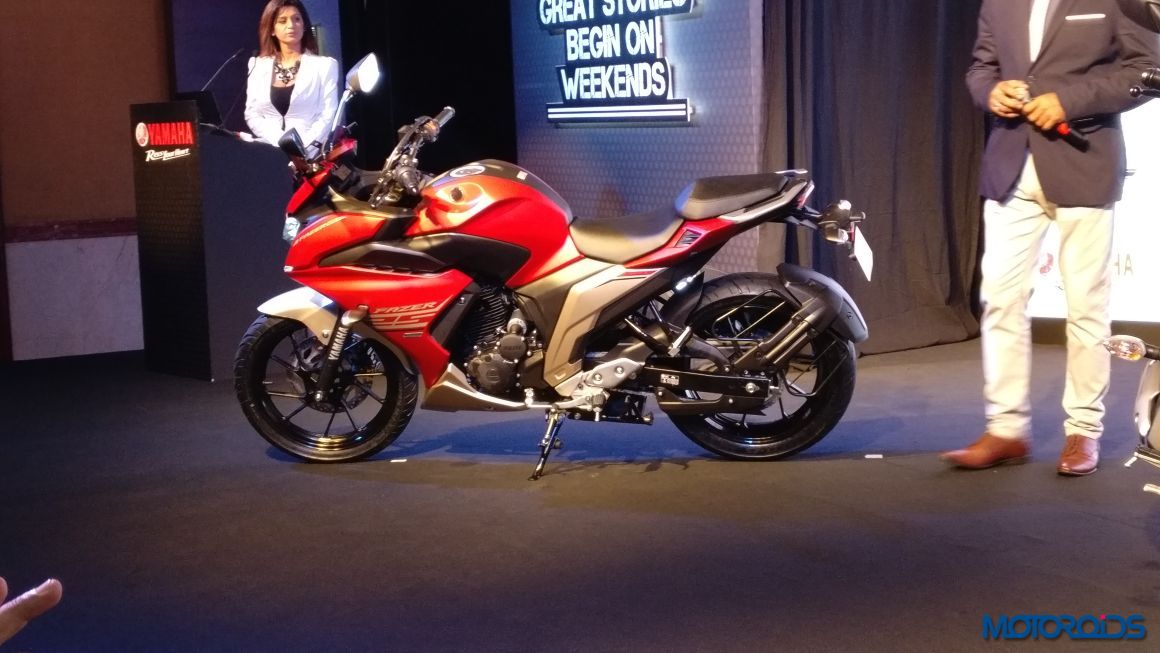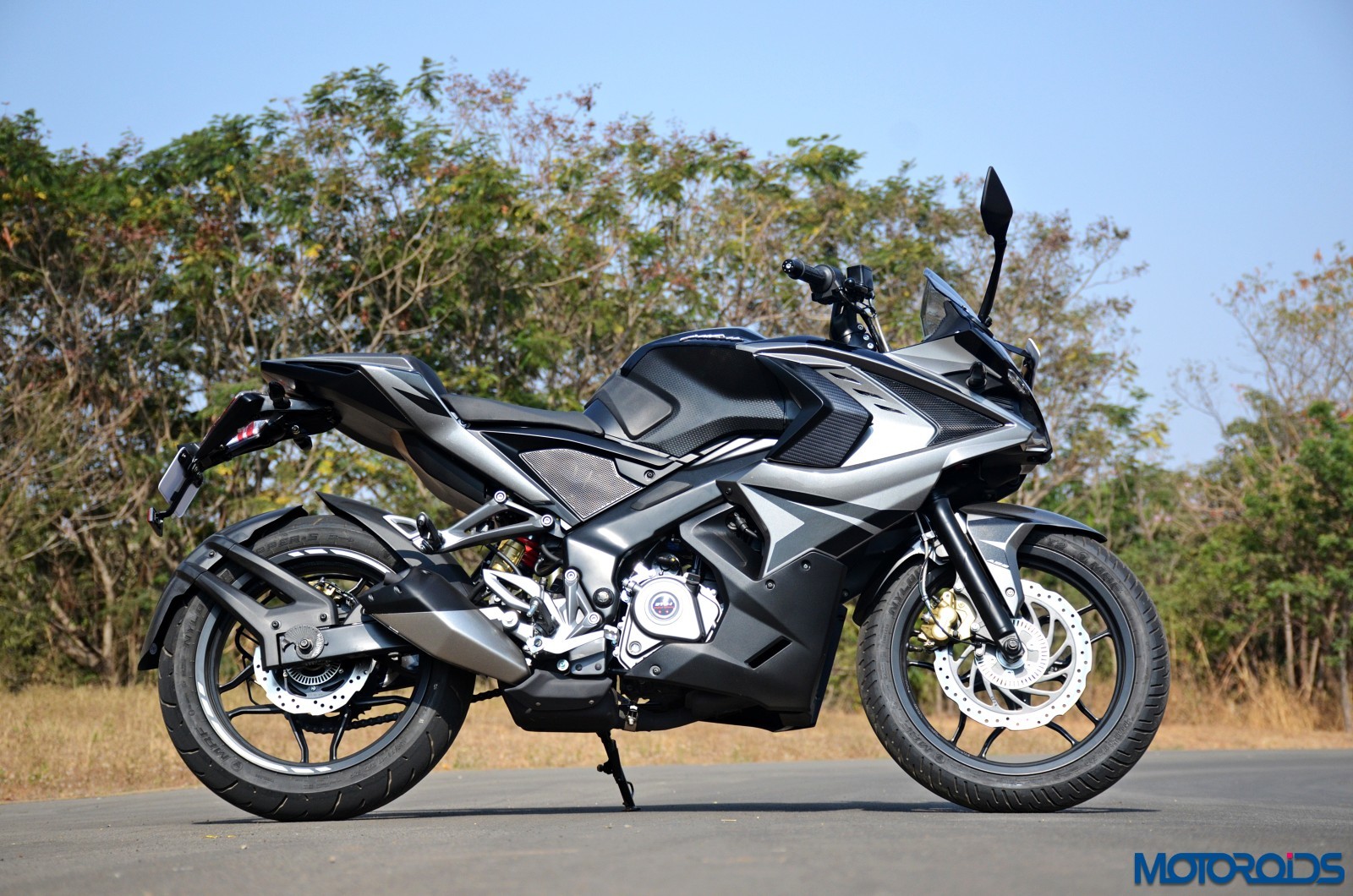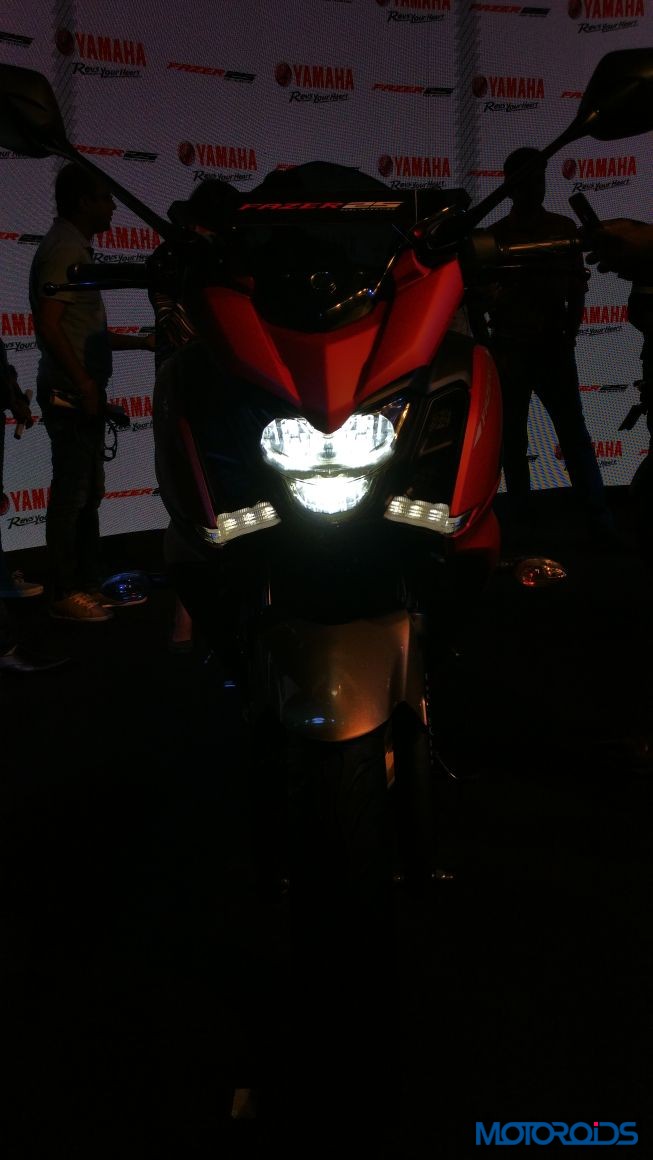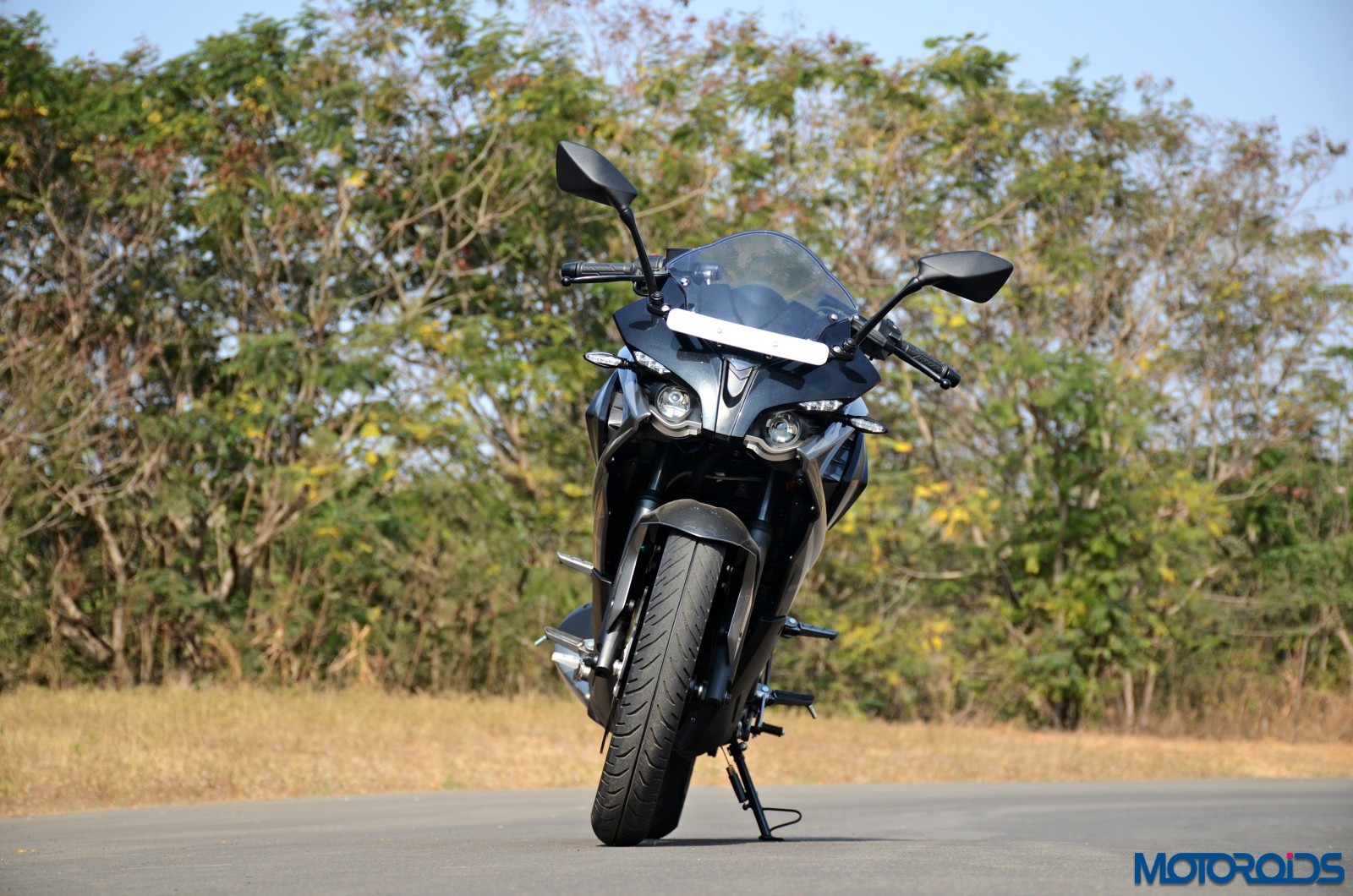Pitched as an affordable Sports Tourer, the Yamaha Fazer 25 has been launched as an alternative for those who wished the FZ 25 was more aerodynamically efficient. The Fazer 25 is mechanically identical to its naked sibling and like the latter, it too finds a competitive rival from Bajaj’s stable in the form of the Pulsar RS200. We stack them together to help you find out which among these two will fly better as a paper plane.
Engine Specifications
| Yamaha Fazer 25 | Bajaj Pulsar RS 200 | |
| Cylinders | Single Cylinder | Single Cylinder |
| Type | Oil Cooled, SOHC, 2 Valve | Liquid Cooled SOHC, 4 Valve |
| Fueling | Fuel Injected | Fuel Injected |
| Cubic Capacity | 249cc | 199.5cc |
| Max Power | 20.9 hp @ 8,000 rpm | 24.5 hp @ 9,750 rpm |
| Max torque | 20.0Nm at 6,000rpm | 18.6Nm@8,000rpm |
| Gearbox | 5-speed | 6-speed |
| Power-to-weight ratio | 135.7hp/tonne | 148.48hp/tonne |
| Torque-to-Weight ratio | 129.8Nm/tonne | 112.7Nm/tonne |
| Kerb Weight | 154kg | 165kg |
| Fuel Capacity | 14 litres | 13 litres |
Between these two, the Yamaha Fazer 25 is the king of the displacement hill. However, with a set of extra valves, the Pulsar RS 200 has a clear advantage in terms of power available at the crank. The Yamaha’s engine balances that disadvantage with a higher torque output that peaks at a relaxed 6,000 pm. Between the two, the Fazer 25 is the machine to watch out for if you like a healthy dose of bottom and mid-range performance. While the Pulsar RS 200 with an additional cog and its higher power output is more suited for spirited riding. The Fazer 25 is also 11 kilos lighter in comparison to the Pulsar.
Chassis and Tyres
| Yamaha Fazer 25 | Bajaj Pulsar RS200 | |
| Chassis Type | Diamond Frame | Perimeter |
| Front Tyre | 100/80-17 | 100/80-17 |
| Rear Tyre | 140/70-17 | 130/70-17 |
| Front Forks | Telescopic | Telescopic |
| Rear Suspension | Monoshock | Monoshock |
| Front Brake | 282mm Disc Type | 300mm Disc Type |
| Rear Brake | 220mm Disc Type | 230mm Disc Type |
The Bajaj Pulsar RS 200 employs a more modern perimeter frame compared to the Yamaha Fazer 25, which makes do with a conventional diamond type setup. Where the Yamaha has a slightly wider rear tyre, the Pulsar employs bigger brake discs at both ends and is the corner carver between the two. From our experience with the FZ 25, the Fazer should impress with its stability and mature handling traits.
Dimensions & Features
| Yamaha Fazer 25 | Bajaj Pulsar RS200 | |
| Length | 2015mm | 1999mm |
| Width | 770mm | 765mm |
| Wheelbase | 1360mm | 1355mm |
| Ground Clearance | 160mm | 157mm |
| Height | 1115mm | 1114mm |
| ABS | No | Optional |
| Headlight Illumination | LED | Projector |
| Handlebar Type | Flat | Clip-ons |
| Instrumentation | Full LCD | Analogue-Digital |
| Price (Ex-Showroom, Mumbai) | INR 1.28 Lakh | INR 1.24 Lakh |
There is very little between the dimensions of the two motorcycles, except for the fact that the Fazer 25 is 15mm longer. The Pulsar 200RS goes one up on the Yammie by offering optional, single channel ABS, which the Yamaha does not even provide as an option. Illumination on the Yamaha is all-LED, while the Pulsar RS200 gets a dual projector setup. At an asking price which is nearly the same, if one has to conclude this paper fight, the Bajaj Pulsar RS200 should appeal more if you like your rides to be involving, whereas, the Yamaha Fazer 25 will stand right up there with its mature performance traits which should make it an ideal and affordable Sports Tourer.

